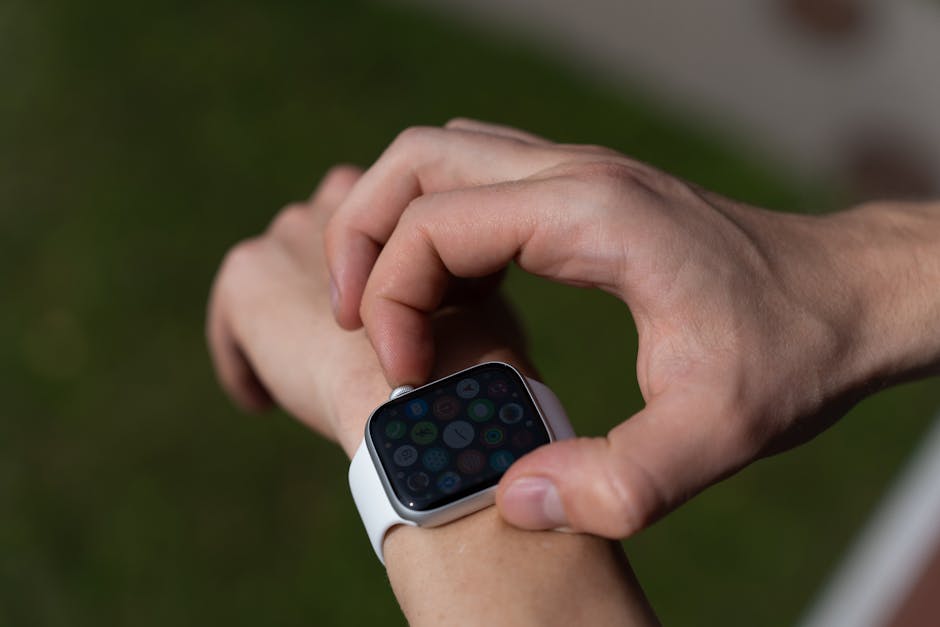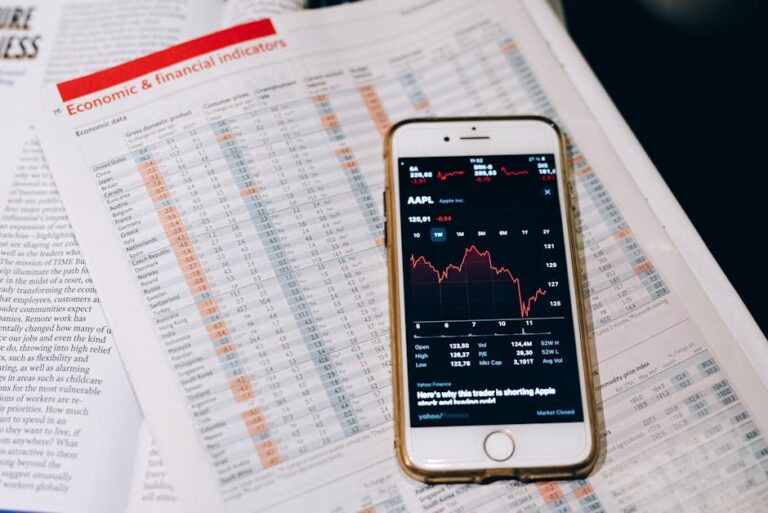App functionality is the backbone of any successful application. It determines user experience, engagement, and ultimately, the app’s overall success. As we approach 2025, understanding and implementing cutting-edge app functionality is more crucial than ever. This article delves into the key trends, best practices, and actionable advice for building applications that resonate with users in the rapidly evolving digital landscape.
The Evolving Landscape of App Functionality
The year 2025 promises to be a pivotal moment for mobile and web applications. User expectations are constantly rising, demanding more intuitive, personalized, and seamless experiences. Consequently, app functionality must adapt to meet these evolving needs.
Several key trends are shaping the future of app functionality, including the rise of artificial intelligence (AI), augmented reality (AR), and the Internet of Things (IoT). These technologies are enabling developers to create richer, more immersive, and more useful applications.
AI-Powered Personalization
Artificial intelligence is no longer a futuristic concept; it’s a present-day reality that’s transforming app functionality. AI algorithms can analyze user data to personalize content, recommendations, and even the app’s interface.
For instance, e-commerce apps can leverage AI to suggest products based on past purchases and browsing history, while news apps can curate articles based on user interests. This level of personalization significantly enhances user engagement and satisfaction. As AI evolves, expect to see even more sophisticated personalization techniques, such as predictive personalization, which anticipates user needs before they even arise.
Augmented Reality Integration
Augmented reality (AR) is another game-changing technology that’s revolutionizing app functionality. AR overlays digital information onto the real world, creating interactive and immersive experiences.
Retail apps are using AR to allow users to virtually try on clothes or visualize furniture in their homes. Gaming apps are using AR to create more engaging and realistic gameplay. The potential applications of AR are vast and continue to expand. According to BBC News, AR is poised to become a mainstream technology, transforming how we interact with the world around us.
IoT Connectivity
The Internet of Things (IoT) connects everyday devices to the internet, creating a vast network of interconnected objects. This connectivity opens up new possibilities for app functionality, allowing apps to interact with and control IoT devices.
Smart home apps can control lighting, temperature, and security systems. Healthcare apps can monitor patient vital signs and track medication adherence. The integration of IoT and app functionality is creating a more connected and automated world. This synergy enhances convenience, efficiency, and overall user experience.
Key Functional Elements of a Modern App
Beyond the integration of emerging technologies, several fundamental functional elements are crucial for creating successful applications in 2025.
- Intuitive User Interface (UI): A clean, simple, and intuitive UI is essential for user adoption. Users should be able to easily navigate the app and find what they’re looking for.
- Seamless User Experience (UX): UX encompasses the entire user journey, from initial download to daily usage. A seamless UX ensures that users enjoy the app and keep coming back for more.
- Robust Security: Data security is paramount. Apps must protect user data from unauthorized access and cyber threats.
- Offline Functionality: Providing some level of offline functionality enhances usability, particularly in areas with limited internet connectivity.
- Cross-Platform Compatibility: Ensuring that the app works seamlessly across different devices and operating systems is crucial for reaching a wider audience.
Prioritizing User Experience
In the competitive app market, user experience (UX) reigns supreme. Users are quick to abandon apps that are difficult to use or fail to meet their needs. Therefore, prioritizing UX is crucial for app success.
Conducting thorough user research, creating user personas, and conducting usability testing are essential steps in the UX design process. By understanding user needs and pain points, developers can create apps that are truly user-centric.
Remember, a well-designed UX translates to increased user engagement, higher retention rates, and positive word-of-mouth referrals.
Ensuring Data Security and Privacy
Data breaches are a growing concern, making data security a top priority for app developers. Users expect their data to be protected, and apps must adhere to strict privacy regulations, such as GDPR and CCPA.
Implementing robust security measures, such as encryption, multi-factor authentication, and regular security audits, is essential for protecting user data. Transparency about data collection practices and providing users with control over their data are also crucial for building trust. According to The New York Times, data security breaches are increasing, emphasizing the importance of prioritizing security.
Implementing Advanced App Functionality
Integrating advanced functionality requires careful planning, execution, and a deep understanding of the target audience.
- Define Clear Goals: Before implementing any new functionality, define clear goals and objectives. What problem are you trying to solve? What user needs are you trying to meet?
- Choose the Right Technology: Select the appropriate technologies and frameworks for the task. Consider factors such as performance, scalability, and security.
- Focus on User Value: Ensure that any new functionality adds real value to the user experience. Avoid adding features simply for the sake of adding features.
- Test Thoroughly: Conduct rigorous testing to ensure that the new functionality works as expected and doesn’t introduce any bugs or performance issues.
- Iterate and Improve: Continuously monitor user feedback and iterate on the functionality to improve its performance and usability.
Real-World Examples of Innovative App Functionality
Several apps are already pushing the boundaries of app functionality, demonstrating the potential of emerging technologies.
- Sephora Virtual Artist: This app uses AR to allow users to virtually try on makeup products before making a purchase.
- Google Lens: This app uses AI to identify objects in the real world and provide relevant information.
- Nest: This smart home app allows users to control their thermostats, lighting, and security systems remotely.
- Duolingo: This language learning app uses gamification and personalized learning to make language learning more engaging and effective.
Best Practices for Optimizing App Functionality
Optimizing app functionality is an ongoing process that requires continuous monitoring, analysis, and improvement.
Performance Optimization
App performance is critical for user satisfaction. Slow loading times, crashes, and laggy performance can quickly frustrate users and lead to uninstalls. Regularly monitor app performance and identify areas for improvement. Optimize code, compress images, and use caching to improve loading times and reduce resource consumption. Also, consider utilizing cloud services to offload processing and storage.
Accessibility Considerations
Ensure that your app is accessible to users with disabilities. Follow accessibility guidelines, such as WCAG, to make your app usable by everyone. Provide alternative text for images, use sufficient color contrast, and ensure that the app can be navigated using assistive technologies. Improving accessibility expands your potential user base and promotes inclusivity.
Consider these points while choosing a Mobile App Development Company
Regular Updates and Maintenance
App functionality should be updated and maintained regularly to address bugs, security vulnerabilities, and evolving user needs. Release updates frequently and communicate changes to users. Monitor user feedback and address any issues promptly.
App Functionality: Predictions for 2025 and Beyond
As we look ahead to 2025 and beyond, several emerging trends will continue to shape app functionality.
- Edge Computing: Processing data closer to the source will reduce latency and improve performance.
- 5G Connectivity: Faster and more reliable internet connections will enable more complex and data-intensive app functionality.
- Voice Control: Voice-activated interfaces will become more prevalent, allowing users to interact with apps hands-free.
- Blockchain Integration: Blockchain technology will enhance security and transparency, particularly in areas such as finance and supply chain management.
FAQ on App Functionality
Here are some frequently asked questions about app functionality in 2025:
What are the key elements of good App Functionality in 2025?
Key elements include intuitive UI/UX, robust security, AI-powered personalization, AR integration, IoT connectivity, and cross-platform compatibility. Prioritizing user experience and data security is crucial.
How important is AI for future App Functionality?
AI is extremely important. It enables personalized experiences, predictive analysis, and automation, enhancing user engagement and app efficiency. AI-driven features are becoming increasingly essential for competitive apps.
What role will Augmented Reality (AR) play in upcoming App Functionality?
AR will play a significant role by creating immersive and interactive experiences. AR applications in retail, gaming, and education are expanding rapidly, offering users new ways to interact with digital content in the real world.
How can I ensure my App Functionality is secure?
Ensure robust security by implementing encryption, multi-factor authentication, and regular security audits. Comply with privacy regulations like GDPR and CCPA, and be transparent with users about data collection practices. Stay updated on the latest security threats and vulnerabilities.
Why is cross-platform App Functionality important?
Cross-platform functionality ensures a consistent user experience across different devices and operating systems. This approach maximizes reach, reduces development costs, and ensures that your app is accessible to a wider audience.
Conclusion
App functionality is the cornerstone of any successful application. By understanding the evolving landscape, embracing emerging technologies, and prioritizing user experience, developers can create apps that resonate with users in 2025 and beyond. Staying informed about the latest trends, implementing best practices, and continuously iterating on functionality are essential for long-term success. The future of app functionality is bright, and those who embrace innovation will be well-positioned to thrive in the ever-changing digital world. By focusing on creating user-centric, secure, and innovative applications, developers can unlock the full potential of app functionality and deliver exceptional experiences that delight and engage users. Remember to stay updated with current news on application development, such as found on Google News, for continued success.


















